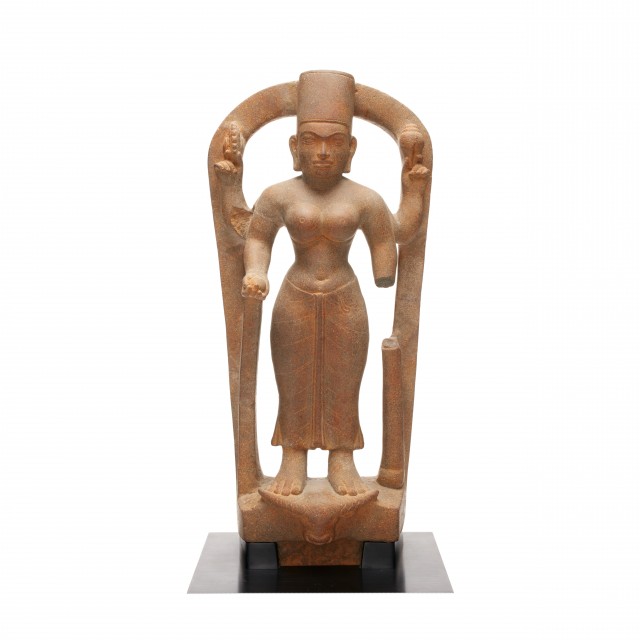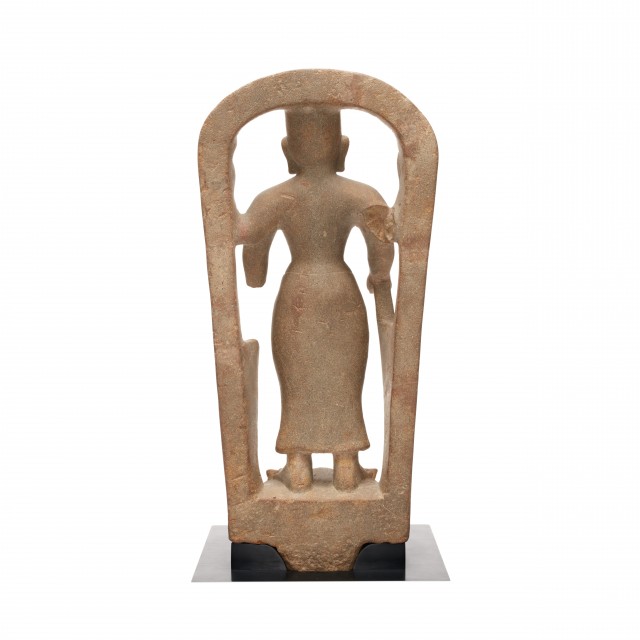Durga as the Slayer of the Buffalo-Demon (Durga Mahishasuramardini)

Photography by Synthescape, Digital image © Asia Society

Photography by Synthescape, Digital image © Asia Society
Durga as the Slayer of the Buffalo-Demon (Durga Mahishasuramardini)
7th century
Cambodia
Sandstone
H. 15 x W. 7 3/8 x D. 3 3/4 in. (38.1 x 18.7 x 9.5 cm)
Asia Society, New York: Mr. and Mrs. John D. Rockefeller 3rd Collection, 1979.61
Provenance
John D. Rockefeller 3rd, New York, NY; acquired from Peter Marks Gallery, New York, NY, 1973.
The Asia Society, New York, NY, bequest of John D. Rockefeller 3rd, New York, NY, 1979.
Licensing inquiries
Durga is one of the more powerful forms taken by the Hindu goddess Devi. In this Cambodian sculpture, Durga is shown vanquishing the buffalo-demon Mahisha. Mahisha, who had achieved great powers through the practice of austerities and was tormenting the world, could not be stopped by Shiva, Vishnu, or any of the other Hindu gods. According to the best-known account of Durga's origin, the gods created a woman, forming parts of her body from their own and lending her their weapons so that she would embody all of their combined powers. After a fierce battle Durga subdued Mahisha and saved the world; her defeat of the demon is indicated by the head of the buffalo upon which she stands. This depiction emphasizes Durga's assumption of Vishnu's powers, indicated by his attributes that she holds in her hands: the conch shell, the wheel, and the ball symbolizing the earth. Vishnu's club is below her missing lower hand. Her tall crown also parallels the one typically worn by Vishnu.


